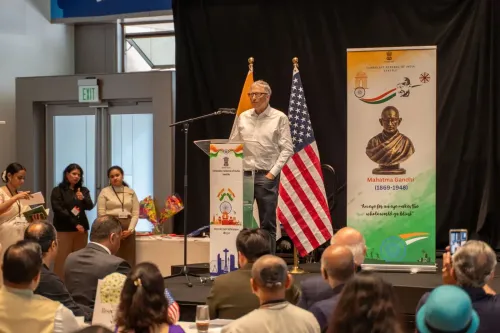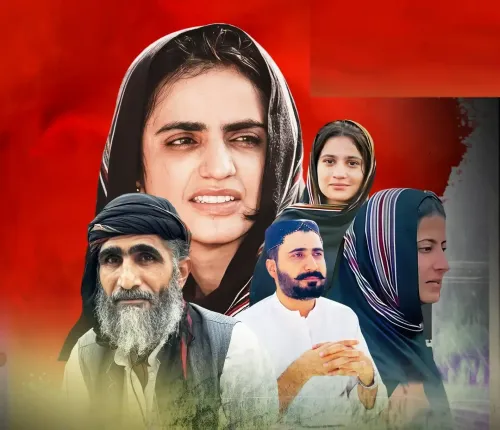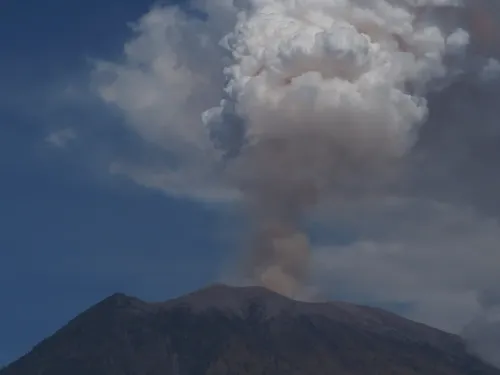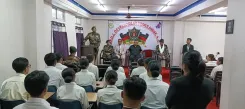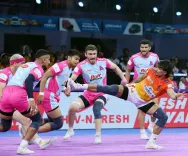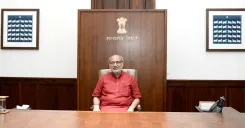Is Bangladesh's NCP Cornering the EC Over 'Shapla' Symbol?
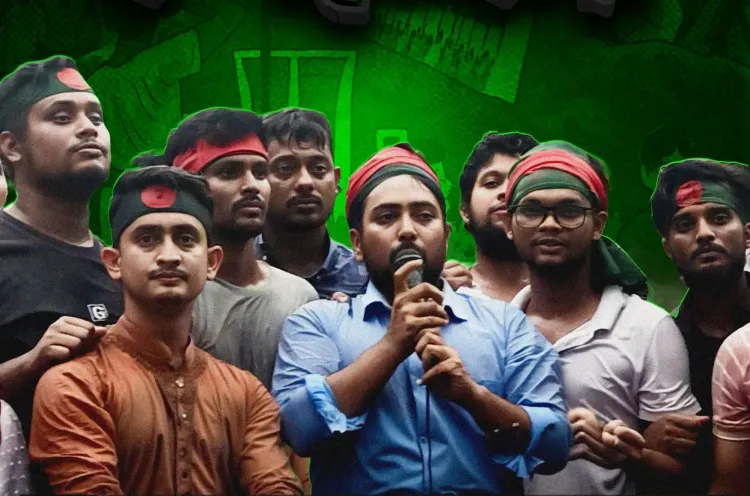
Synopsis
Key Takeaways
- NCP demands 'Shapla' symbol as a key electoral emblem.
- EC rejects NCP's requests, citing legal limitations.
- Political tensions escalate as NCP threatens electoral disruption.
- Broader implications for Bangladesh's political landscape.
- Calls for inclusivity and fair representation are essential.
Dhaka: The National Citizen's Party (NCP) of Bangladesh, under the leadership of Nahid Islam, has issued a warning that it may disrupt the general elections scheduled for February 2026 unless it receives one of its sought-after symbols - a red or white Shapla (Water Lily). The Election Commission (EC) confirmed that the NCP initially requested 'Shapla', along with other symbols like a pen or mobile phone, but later insisted on 'Shapla' - the national flower and emblem of Bangladesh - as its designated election symbol.
Sarjis Alam, NCP's chief organizer, expressed on social media, "Given there are no legal impediments, the NCP's symbol should unequivocally be the Shapla. There is no alternative. If not, we will witness how the elections unfold and who aspires to seize power and the ensuing benefits."
On September 24, the NCP Convenor Islam submitted an email to the EC reiterating the request for 'Shapla' after the EC had rejected their previous application, stating that the party would not receive the requested symbol.
The NCP's application revealed that on June 4, its representatives met with an EC committee member, who assured them that 'Shapla' would be included in the final symbol list. Following that, on June 22, the party filed for registration as a political entity, adhering to the EC's public notification from March 10, while also requesting the reservation of the 'Shapla' symbol. However, the EC turned down the request.
It’s noteworthy that the NCP had an audience with the Chief Election Commissioner and other officials on July 13, advocating for the inclusion of 'Shapla' as an electoral symbol. The application referenced Article 4(3) of the Constitution, alongside the Bangladesh National Anthem, Flag and Emblem Order of 1972, and the Bangladesh National Emblem Rules of 1972, asserting that there are no legal constraints preventing 'Shapla' from being used as an electoral symbol.
The NCP claims that restrictions apply only to the complete National emblem design, not to its individual elements. They argue that 'Shapla' is merely a component of the emblem, not the emblem in its entirety. The party's statement pointed out inconsistencies in the EC's rulings, mentioning the flower's inclusion in the DGFI logo as a rationale, despite the commission having previously approved symbols like paddy stalks, eagles, and balance scales, which are also featured in official logos of various Bangladesh entities. NCP's Joint Chief Coordinator, Arifur Rahman Tuhin, asserted that the party will not accept any alternative to the 'Shapla'.
Interestingly, EC Senior Secretary Akhtar Ahmed has indicated that the NCP must select its electoral symbol from the official list. On October 2, the EC rejected NCP's request, clarifying that 'Shapla' is not included in the scheduled symbols as per the Election Conduct Rules. The EC provided the NCP with a list of 50 alternative symbols and allowed until October 7 to make a selection. The list of reserved symbols for parties and independent candidates has been expanded from 69 to 115, accommodating 50 registered parties and five suspended ones.
This dispute is part of the larger narrative surrounding political violence and oppression in Bangladesh, including the need for investigation into the May 2013 Shapla Square crackdown, a matter the NCP has called to attention. The NCP's anti-Awami League sentiment has aligned it more closely with right-wing Islamist groups such as Hefazat-e-Islami (HeI) and Jamaat-e-Islami (JeI).
Additionally, several new parties are anticipated to secure registration ahead of the 13th parliamentary election.
In parallel to party-specific logos, the EC has also set aside symbols for independent candidates. To facilitate this, the commission plans to modify the symbol list under the Election Conduct Rules and forward it to the law ministry for review shortly. Despite calls for the removal of the Awami League's 'boat' logo from the list, the EC has decided to keep it in a suspended status.
The NCP further argues that prior to the parliamentary elections, a Constituent Assembly election should occur first, followed by the drafting of a new constitution under the July Charter framework. If this demand gains traction, the likelihood of a parliamentary election in Bangladesh in the near future diminishes significantly.
The electoral landscape in Bangladesh has primarily been a contest between the Awami League and the Bangladesh Nationalist Party (BNP). In the previous 15 months, the unelected interim government led by Muhammad Yunus and his advisors has recognized the challenges of transforming the country's volatile political culture, despite recent student uprisings. The Yunus administration has engaged in what is perceived as legislative overreach, masked by calls for reform and widely regarded as a political vendetta. Controversial ordinances such as the Cyber Protection Act, modifications to the International Crimes (Tribunals) Act, and the Enforced Law Ordinance have stirred significant public outcry.
Yunus's affinity for the NCP is well-documented, driven not by genuine national interests or commitments to development, but rather by political maneuvering that risks jeopardizing the welfare of the populace in Bangladesh.
(The writer possesses expertise in South Asia and Eurasia and has previously collaborated with the Manohar Parrikar Institute for Defence Studies and Analyses. The views expressed are personal.)

